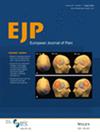Healthcare Practitioner and Other Professionals' Perspectives on Gabapentinoid Misuse and Dependence: A Systematic Review of Qualitative Studies
Abstract
Background and Objective
The global rise in gabapentinoid prescriptions for chronic pain has been striking. However, this trend has been accompanied by growing concerns about misuse and dependence. This qualitative systematic review aimed to synthesise the perspectives of healthcare practitioners and other professionals on these emerging challenges.
Databases and Data Treatment
Six databases (MEDLINE, Scopus, Web of Science, CINAHL, EMBASE, PsycINFO) were searched to May 2025. Eligible studies used qualitative or mixed methods to explore professional views on gabapentinoid misuse or dependence. Studies focusing solely on patient perspectives or therapeutic use were excluded. Methodological quality was assessed using the Critical Appraisal Skills Programme checklist. Data were analysed using thematic synthesis, and confidence in the findings was evaluated using GRADE-CERQual.
Results
After screening 1584 records, 19 original studies were included. Most were conducted in substance use treatment and law enforcement settings, where professionals frequently encounter vulnerable populations and more severe patterns of misuse than in general clinical care. Reported drivers of misuse included polydrug use, opioid substitution, psychological distress and poor access to non-pharmacological care. Signs of misuse included early refills, dose escalation and reluctance to taper. Professionals described ethical tensions in prescribing and dispensing and proposed harm reduction strategies, including prescriber education, regulatory reform, expanded treatment access and public awareness.
Conclusions
Gabapentinoid misuse is shaped by clinical, social and structural factors. Tackling these challenges requires systemic responses that go beyond individual prescribers. Lessons from opioid policy responses should inform balanced, compassionate and evidence-informed strategies to reduce harm and improve care.
Significance Statement
This is the first systematic review to synthesise professional perspectives on gabapentinoid misuse and dependence, drawing on studies from Europe, North America, the Middle East and Africa. Integrating insights from healthcare, law enforcement and policy settings, it reveals the structural drivers behind rising misuse—including opioid regulation, socioeconomic hardship and limited access to alternatives—and highlights gaps in clinical guidance. The findings offer actionable, cross-sector strategies to support safer prescribing, informed policy and more effective harm reduction.


 求助内容:
求助内容: 应助结果提醒方式:
应助结果提醒方式:


